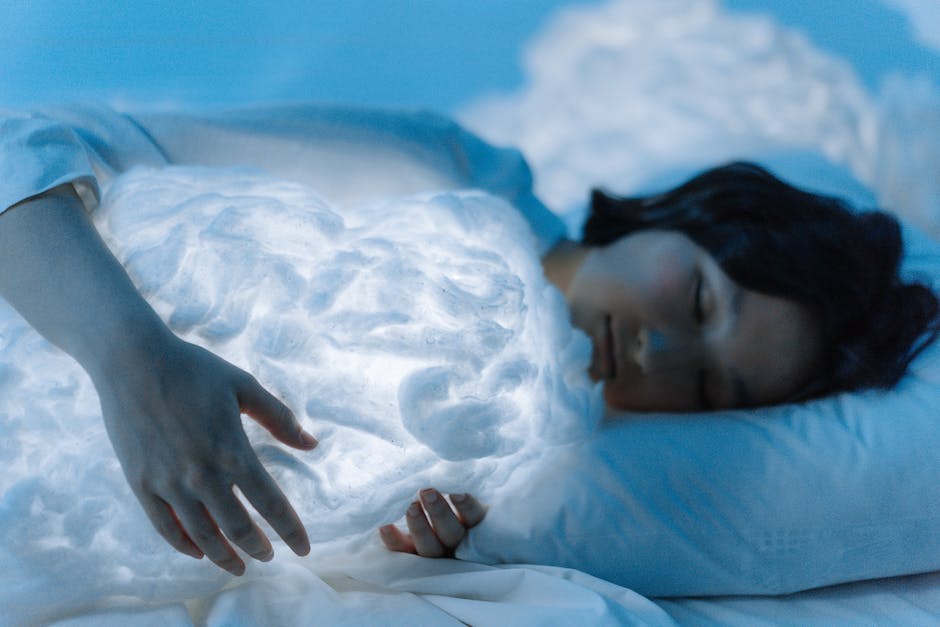Recognizing the intricacies of sleep and its various stages is vital for understanding the implications to our overall health and function. One of the essential aspects of sleep that often comes under scrutiny is Rapid Eye Movement (REM) sleep, and more specifically, the REM rebound phenomenon. Sleep architecture is a complex structure, involving different stages each with unique characteristics and purposes. It is within this framework that we can begin to understand the significance of REM sleep and the impacts of the REM rebound event. By exploring sleep deprivation scenarios and certain withdrawal states, we can broaden our understanding of why and when REM rebounds occur.
Understanding Sleep Architecture
Understanding Sleep Architecture
Sleep architecture refers to the structure and pattern of sleep stages that individuals cycle through during a period of sleep. Primarily, sleep stages are subdivided into two categories: Rapid Eye Movement (REM) sleep and Non-Rapid Eye Movement (NREM) sleep. NREM sleep is further divided into three stages: N1, N2, and N3, each with distinctive physiological features and roles such as body repair or memory consolidation.
The Five Stages of Sleep
During the N1 stage of sleep, the transition is made from wakefulness to sleep, lasting for five to ten minutes. This stage is characterized by slower eye movements, reduced muscle activity, and occasional muscle twitching.
The N2 sleep stage marks a deeper level of sleep where the heart rate slows down and body temperature decreases. This stage accounts for approximately 45-55% of total sleep.
N3 or deep sleep stage is when the most restorative processes of sleep occur. It plays a key role in growth and development, cellular repair, and immune function. During this stage, parasomnias like sleepwalking and night terrors can occur.
Finally, REM sleep, the stage associated with vivid dreaming, involves rapid eye movements, increased brain activity, and temporary muscle paralysis. REM sleep is crucial for memory consolidation and learning, and it accounts for around 20-25% of a total sleep cycle.
The Sleep Cycle
A complete sleep cycle lasts about 90-120 minutes, and this cycle is repeated multiple times throughout the night. The cycle starts with NREM sleep- specifically the N1 stage, transitions to the N2 and then the N3 stage, before finally entering the REM stage. As the night progresses, periods of REM sleep increase in length, and N3 sleep decreases.
How Sleep Stages Impact Health and Functioning
Each stage of sleep serves a particular purpose essential to our overall health and functioning. Deep sleep (N3) is vital for physical recovery, growth and development, and immune function. Memory is consolidated during REM sleep, which makes it critical for learning and memory. Frequent interruptions of these stages or a consistent lack of time spent in these stages can lead to a range of health problems, including cognitive issues, mood disorders, weakened immunity, and increased risk for certain chronic conditions.
REM Rebound Phenomenon
The REM rebound refers to the increase in frequency and duration of REM sleep stages that occurs following periods of sleep deprivation or disruption. Essentially, this phenomenon is the body’s attempt to “catch up” on missed REM sleep. Evidence suggests that REM sleep deprivation can lead to mood disturbances, cognitive deficits, and impairments in psychomotor performance. Thus, REM rebound may be a critical process in restoring optimal brain function post-deprivation.
It’s crucial to comprehend the various stages of sleep, their significance, and their role in the broader context of the sleep cycle to appreciate their impact on our overall health and wellbeing. Similarly, becoming aware of occurrences such as the REM rebound can deliver a deeper understanding of how our bodies manage disruptions in sleep patterns.

Introduction to REM Sleep and REM Rebound
Deciphering REM Sleep
REM (Rapid Eye Movement) sleep is one of the four cycles of sleep that we as humans go through. It earned its name from the distinct swift movement of the eyes that we exhibit during this stage. Most notably, it’s during REM sleep that we dream the most.
REM sleep holds a unique and crucial role not just due to its association with dreams but also because of its diverse impacts on our brain and overall body. It primes the brain for proficiency in learning and in the creation of neural connections. Both of these aspects help in improved information recall and memory management. Additionally, the mental invigoration happening during this phase plays a key role in maintaining brain health and emotional regulation.
In contrast to other sleep stages, REM sleep is known for increased brain wave activity, akin to the state of being awake. This stage contributes significantly to cognitive abilities related to creativity and problem-solving. At the same time, several physical changes occur, such as rapid eye movements, an accelerated heart rate, and even a temporary paralysis of muscles as a safeguard to prevent physical responses to dreams.
Understanding REM Rebound
Just as REM sleep is a vital part of the overall sleep cycle, disruptions to the REM stage specifically can have profound impacts on our sleep health and overall functioning. One such disruption is known as REM rebound.
The phenomenon of REM rebound involves an increased frequency and duration of REM sleep following a period of REM sleep deprivation. In simpler terms, when the brain has been deprived of its normal share of REM sleep – due to causes such as erratic sleep schedules, insomnia, or use of certain substances – it compensates by increasing the proportion of sleep spent in the REM phase during the next opportunity for sleep.
Causes of REM Rebound
Sleep deprivation is a primary driver of REM rebound. People who consistently lack sleep or have interrupted sleep patterns may find they fall into REM sleep quicker and for a longer duration when they finally get a chance to sleep uninterrupted.
Alcohol and certain substances, such as cannabis, narcotics, and certain medications, can interfere with REM sleep. When you stop using these substances, especially after long-term or heavy use, REM rebound can occur.
Additionally, conditions such as sleep apnea, narcolepsy, or other sleep disorders that affect the quality and quantity of REM sleep can also lead to REM Rebound.
Exploring the Consequences of REM Rebound
A vital point to consider is that REM rebound is an adaptive response by the brain to rectify any previous deprivation, hence acting as a recovery mechanism. Nevertheless, REM sleep is synonymous with intense and vibrant dreaming. Accordingly, REM Rebound can lead to increased dream activity, potentially resulting in nightmares, which may disturb some individuals.
Grasping the concept of REM sleep and the potential for REM rebound can underscore the significance of preserving consistent, quality sleep habits. Those who think they might be undergoing disruptions to their REM sleep or experiencing REM rebound should contemplate consulting with a healthcare professional or a sleep expert.

Effects and Implications of REM Rebound
Decoding REM Rebound
Rapid eye movement (REM) rebound is an unusual phenomenon that causes an increase in the sleep duration dedicated to the REM phase. This phenomenon generally transpires after experiencing a period of REM sleep disruption. Essentially, the human brain makes up for the lost REM sleep by increasing its duration during undisturbed sleep periods.
The Phenomenon of REM Rebound
During REM sleep, our brain is active and dreaming is most common. This phase of sleep has functions related to memory consolidation and mood regulation. It makes up approximately 20-25% of a healthy adults’ sleep cycle. When deprived of REM sleep, such as through the use of certain medications or alcohol, or because of sleep disorders like sleep apnea, the brain naturally compensates at the next available opportunity, entering REM sleep faster, and spending a longer than usual time in REM phase. This is termed as REM rebound.
The Health Implications of REM Rebound
Numerous scientific studies have investigated how REM rebound impacts a person’s health and well-being. Prolonged periods of REM disruption and subsequent REM rebound can cause weight gain, increased inflammation, memory issues, mental health problems, and even an increased risk for cardiovascular disease.
One study published in the journal ‘Sleep’ found that individuals who experience REM sleep rebound are more prone to persistent memory deficits. The study concluded that this was due to REM rebound disrupting the normal cycle of REM and non-REM sleep, which is essential for good cognitive functioning.
Sleep deprivation could also create severe mental stress, which in turn can lead to anxiety and depression. REM sleep deprivation is often found in several depressive disorders, suggesting a strong link between healthy sleep patterns and good mental health.
Other Effects Of REM Rebound
Additionally, REM rebound can aggravate hallucinations and nightmares due to the brain’s elevated activity during extended REM periods. This could potentially disrupt a person’s sleep cycle and lead to temporary episodes of insomnia or other sleep disorders.
Tackling the Impact of REM Rebound
Understanding and addressing the triggers for sleep disruptions leading to REM rebound is important for overall health and well-being. Good sleep hygiene, consistent physical activity, and minimizing consumption of alcohol and certain medications can help in establishing healthy sleep rhythms.
Medical professionals such as sleep therapists and neurologists can offer medical advice and tailor-made sleep management plans to those struggling with persistent sleep disruptions and syndromes that can cause REM rebound. Common treatment methods include cognitive behavioral therapy for insomnia (CBT-I), light treatment, and prescription of medicines known for their REM inhibitory traits.
Comprehending the consequences and implications of REM rebound doesn’t only underline the significance of healthy sleep habits, but it’s also key in managing and improving physical and mental health.

Managing REM Rebound: Tips and Techniques
An Overview of REM Rebound
Rapid Eye Movement (REM) rebound refers to a sleep phenomenon in which an individual goes through prolonged and more frequent REM sleep phases follow periods of REM sleep deficiency. This is the brain’s method of compensating for the REM sleep deficit. REM sleep plays a crucial role in mental and cognitive functions; hence its shortage can result in issues with memory, learning challenges, and mood disorders.
Causes of REM Rebound
This rebound phenomenon can occur due to various factors such as the discontinuation of certain medications, substance withdrawal, particularly those with alcohol or sedatives, sleep deprivation, and sleep disorders like sleep apnea. Lifestyle decisions, including irregular sleep schedules, also contribute to this phenomenon. In identifying REM Rebound, it is crucial to recognize any changes in your sleep pattern and seek medical advice for accurate diagnosis and treatment.
Symptoms of REM Rebound
The primary symptom of REM rebound is excessively vivid, intense, and prolonged dreaming, often manifesting as nightmares. These dreams can frequently wake the sleeper, resulting in fragmented and unrestful sleep. Other symptoms include excessive daytime sleepiness and fatigue due to the poor quality of sleep experienced during the rebound period.
Managing and Preventing REM Rebound
Effective management of REM rebound primarily resides in addressing the underlying cause of REM sleep deprivation. If a specific medication or substance use is causing disruption in REM sleep, consultation with a healthcare provider is crucial for modification or cessation of the drug. It’s essential to not stop taking prescribed medications abruptly without professional guidance.
Establishing a regular sleep schedule can also aid in managing REM rebound. Going to bed and waking up at the same time regularly can help stabilize sleep patterns. Doing so can align the body’s internal clock with the 24-hour day, promoting healthier sleep.
An optimal sleep environment is key in preventing and managing REM rebound. Creating a quiet, dark, and cool sleep environment can enhance sleep quality. It’s also beneficial to minimize the use of electronics in the bedroom, as they emit blue light that can interfere with melatonin production, a hormone critical for sleep regulation.
Addressing stress and anxiety can also be an effective corrective measure for REM rebound. Engaging in relaxing and stress-reducing activities, such as yoga, meditation, reading, or a warm bath before bedtime, can improve the quality of sleep.
Nutrition and Exercise
Healthy nutrition habits and regular physical exercise can also affect sleep regulation and the prevention of REM rebound. Consuming a balanced diet low in caffeine and high in fruits, vegetables, and lean proteins can help to regulate sleep patterns. Regular exercise has been found to promote deeper and more restorative sleep stages, while also reducing stress and anxiety, further contributing to enhanced sleep quality.
Medical Treatment for REM Rebound
In some instances, medical intervention may be necessary to manage REM rebound. A healthcare provider can diagnose the cause of disrupted REM sleep and propose a suitable treatment plan. This could involve a combination of medication, cognitive-behavioral therapy, and lifestyle changes.

The better we understand the sleep architecture, particularly REM sleep and the phenomenon of REM rebound, the better equipped we are to manage it effectively. Insights into this process reveal the significance of maintaining regular, healthy sleep patterns and the role of preventive measures in tumbling the challenges associated with REM rebound. Ultimately, a comprehension of these factors can help improve not only the quality of sleep but also overlying mental and physical performance. As the adage goes, knowledge is power – with a clearer understanding of the REM rebound phenomenon, we are a step closer to harnessing the power of sleep for a healthier life.
